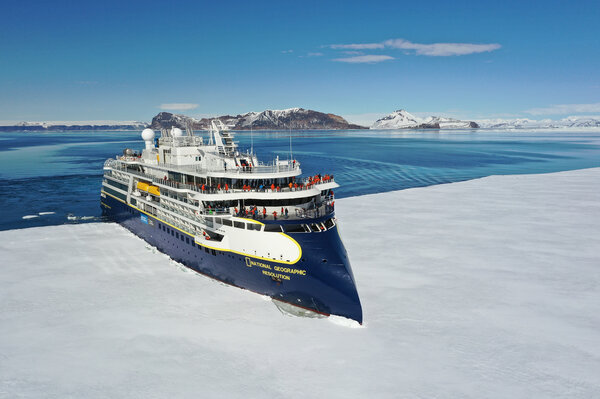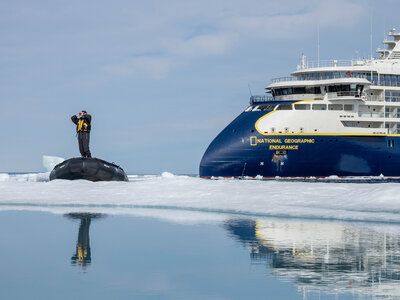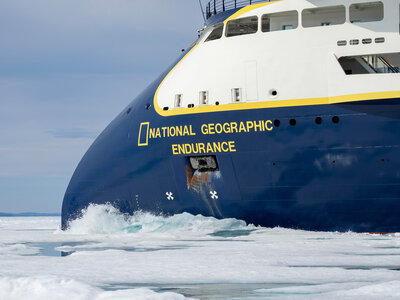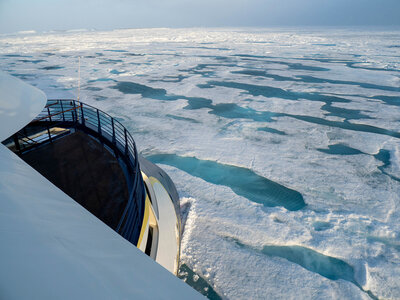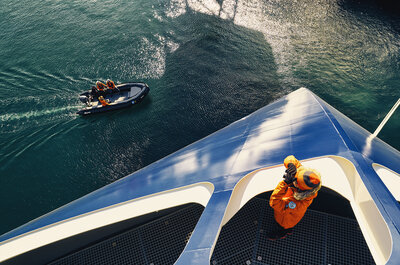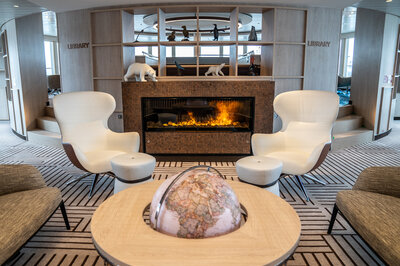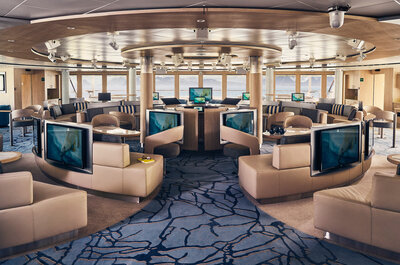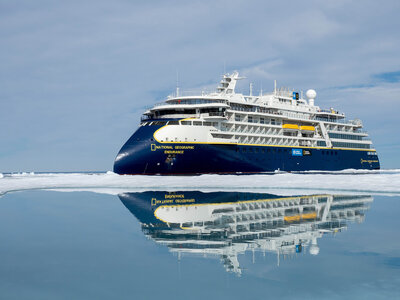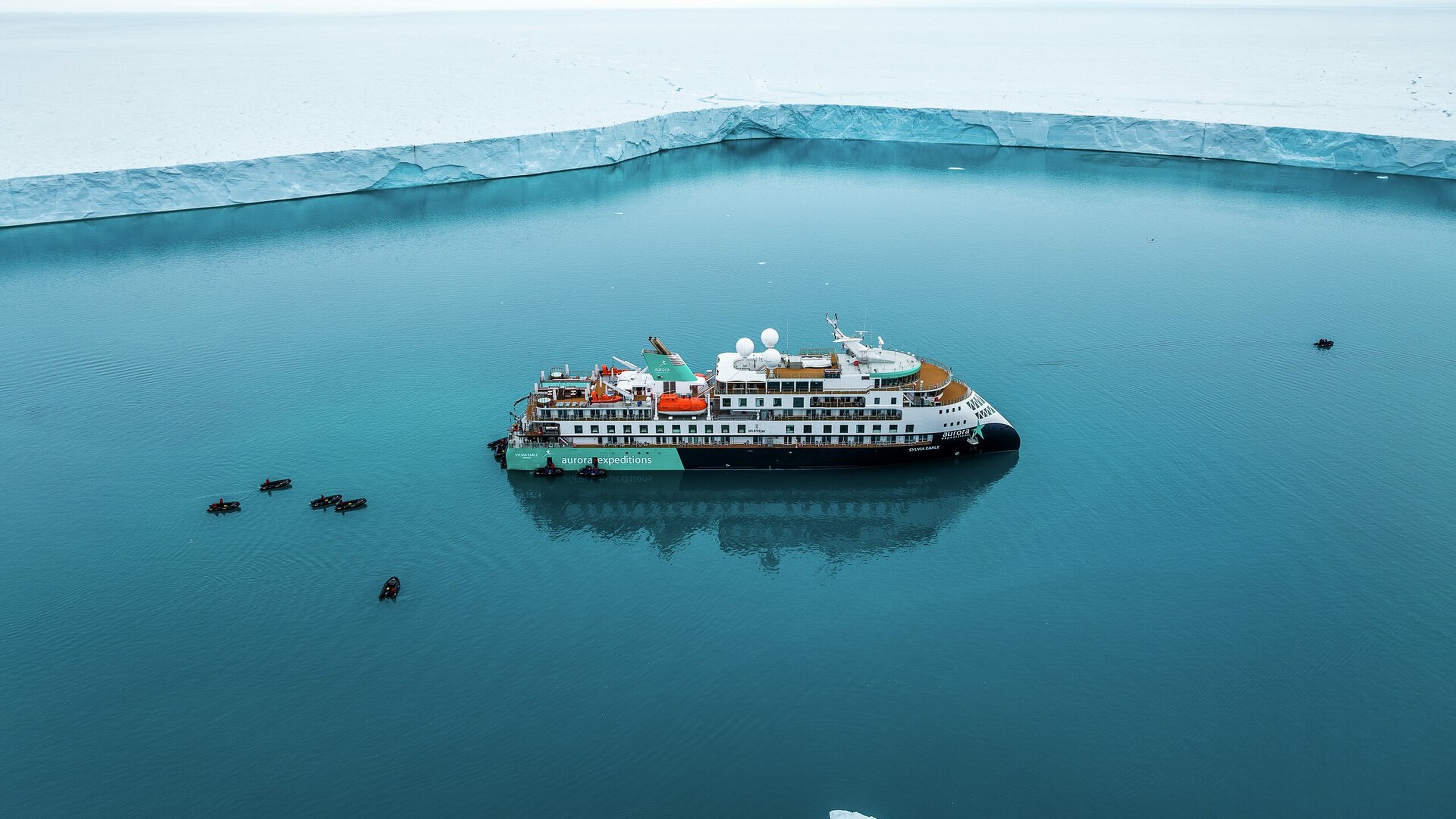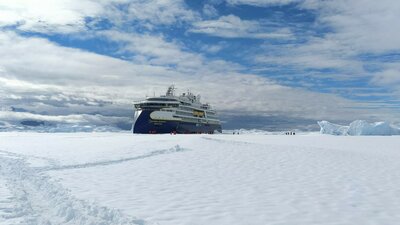In the first week of January 2022, the 'National Geographic Endurance' arrived at the remote Peter I Island in Antarctica. By landing here, the Norwegian-designed and built 'Endurance' has returned 'home', as the island is one of the three Norwegian territories in Antarctica. The uninhabited island lies 450 kilometres from continental Antarctica. Discovered in 1821, it was the first land to have been spotted south of the Antarctic Circle. Most of the year, the island is surrounded by pack ice, making it inaccessible.
The 'Endurance' and the 'Resolution' ice-displacing capacity make these vessels particularly suited for polar expeditions.
"With this vessel, Ulstein allows us to go to places we have not been able to go before"
Sven Lindblad
"We are always looking for new places to go, and with this vessel, Ulstein allows us to go to places we have not been able to go before," said Sven Lindblad at Lindblad Expeditions after having signed the design and shipbuilding contract of the first vessel with Ulstein. Sven Lindblad is the Founder and Co-Chair of the Board at Lindblad Expeditions.
Read the interview with Sven Lindblad.
Developing the 'National Geographic Endurance'
When Lindblad Expeditions first contacted Ulstein, the shipowner had become aware of the X-BOW® hull design solution. This provides less resistance in the sea and thus reduces fuel consumption.
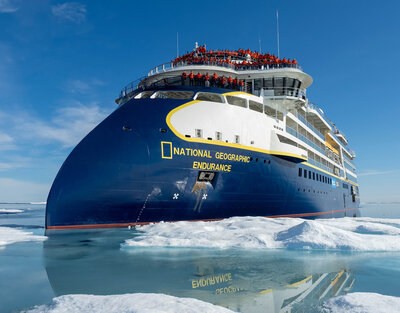
"Through the cooperation with Lindblad and other major stakeholders, we created a vessel, from the initial sketches, through engineering and construction, into a state-of-the-art exploration cruise vessel, based on the Owner's vision," says Terje Våge at Ulstein Design & Solutions AS. In this project, he acted as Lead Naval Architect.
Watch Ulstein's cruise webinar on the Lindblad vessels.
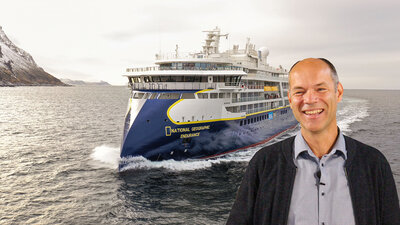
Våge continues:
"Environment and safety are closely connected. There are several rules and regulations for the design and construction of any ship. For a polar exploration cruise vessel intended for operations in desolate areas, a few extra issues must be kept in mind. The Polar Code and the Safe Return to Port regulation set requirements to enhance safety and protect the vessel, everybody onboard, and the environment. As the first passenger vessel, the 'National Geographic Endurance' meets the Polar Class (5) ice strengthening regulation. This increases the safety, and the season can be expanded by entering the polar areas earlier in the spring when nature is most beautiful."
"Two separate engine rooms and a double propulsion system are a part of the required enhanced safety. In addition, the two rotating propulsion units improve manoeuvrability, which is particularly important in ice-infested waters. And due to potential long voyages, fuel and provision capacities are large and make the vessel capable of operating for about 40 days without new supplies."
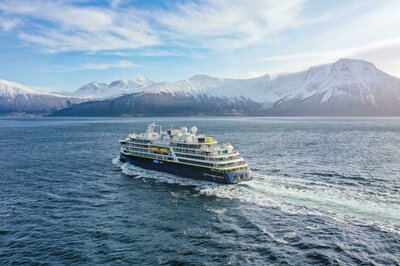
The 'Endurance' is optimised for low impact on the nature
"The strictest marine regulations limit emissions to air and water, and the engines are therefore running on low-sulphur Marine Gas Oil. No fuel tanks are arranged directly towards the shell. This reduces the risk of an oil spill into the sea in case of an accident. The vessel has a treatment system for the ballast water to avoid the spread of biological organisms from one area to another, and she is designed to minimize the impact on marine life by causing low underwater noise levels. To minimize the power consumption, all lighting is based on LED technology and the waste heat from engine cooling water and the exhaust gas is recovered and used for heating purposes and freshwater production. Environmentally-friendly solutions have been considered in developing the 'Endurance' from scratch," concludes Våge.
